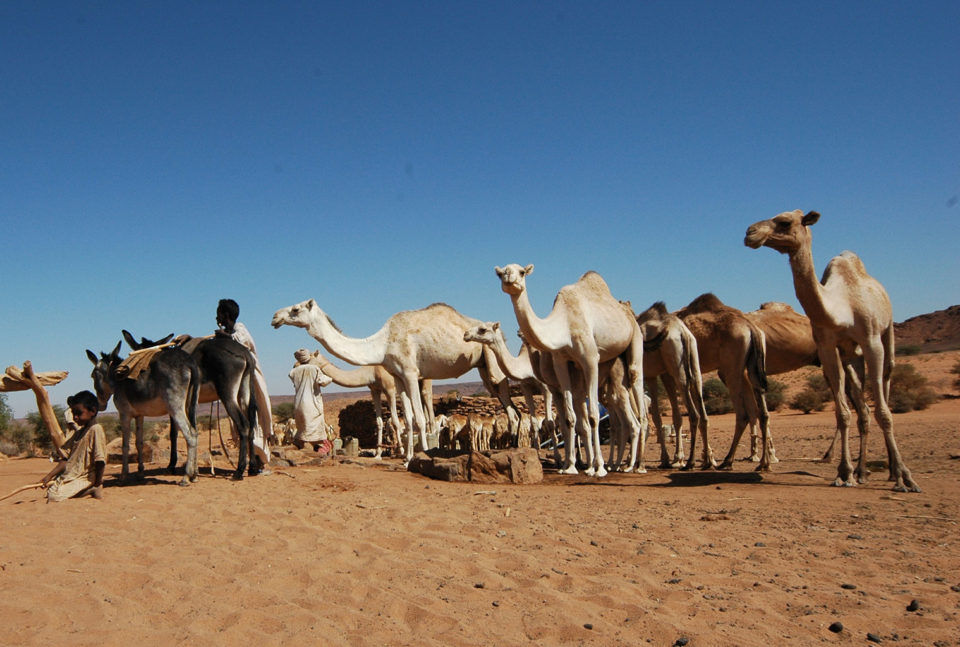Once the southern half of the ancient Kingdom of Kush, characterised by its black volcanic rock structures, and the subject of considerable international geological, archaeological and historical interest, the Bayuda Desert today is home to the Bisharin and other nomadic pastoralists.
Located directly north of Khartoum, in Northern Sudan, inside a giant loop of the Nile, the Bayuda Desert is roughly 300 kilometres square, its south-eastern border marked by Meroe, Kamil in the south west, and is contiguous with both the Northern and Nubian deserts, between which it is sandwiched.
While – geologically speaking – dominated by the results of prehistoric volcanic activity, the Bayuda Desert is not as one dimensional as one would expect, with acacia forests, classic sand sheets, green dry wadis and savanna plains adding topographical complexity to an otherwise unrelenting stone landscape. As in all desert habitats, the beauty of the Bayuda lies in the detail, and in the time it takes to get used it. The light here is extraordinary, as is the sky at night, and the desert supports a surprisingly high number of specialists, not least the Dorcus gazelle.
However, for travellers, the main attractions of the Bayuda Desert are not its wildlife. Rather, it is the discovery, in crossing, that this place is indeed – and has for centuries been – the home of a number of Bedouin tribes, among whom the largest is the Bisharin. Descendents of the ancient Bejawi people, and ethnically a part of the Beja, not all the Bisharin are nomadic (those settled along the Nile are agriculturalists), but the majority, together with smaller tribes, are pastoralists; their trade routes, grazing ranges and watering holes the source of a culture as rich as it is fascinating.
In addition, the Bayuda Desert marks the southern half of what was once Nubia, and as such played a crucial role in the formation of one of the world’s first civilisations. The Nile, though faster, and shallower, and therefore not as agriculturally productive as it was in Egypt, proved the source of everything; of water, of invention, of irrigated lands, of crops, of villages, towns and eventually – in first Napala, near Kamila, at the foot of Jebel Barkal, and then iron rich Meroe – of cities the size the world had never seen.
Indeed, recent rock art findings suggest that Egyptian-Nubian civilisations were preceded by complex Neolithic societies. The Bayuda Desert clearly was not always an inhospitable place. At one point the centre of not just Nubia, but also of Egypt in its entirety, the Bayuda Desert was also source of much of Nubia’s gold, and many of the current small scale mining and smelting operations are living examples of methods practiced 7000 years ago.
